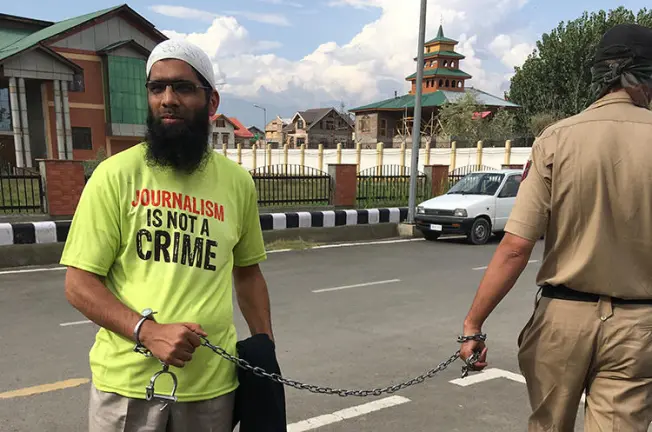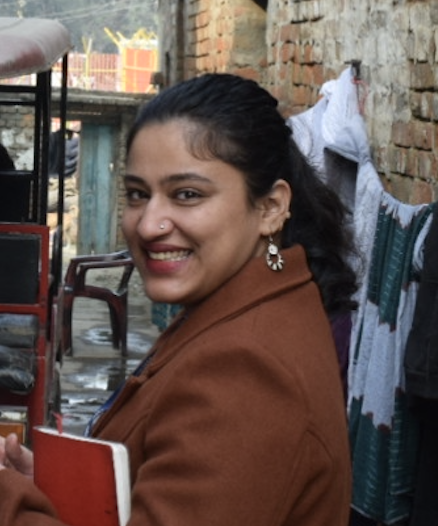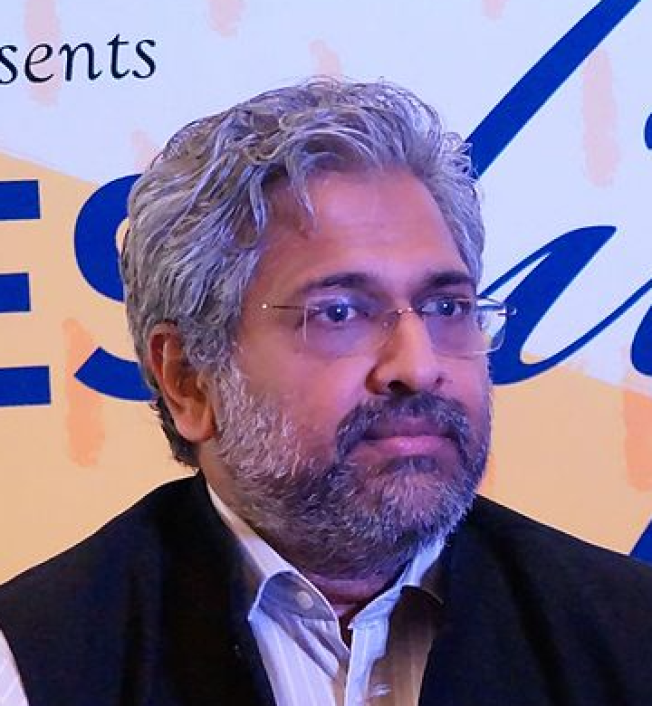Indian journalists’ 2024 election concerns: political violence, trolling, device hacking
Share this:
As the scorching summer peaks this year, India’s political landscape is coming to a boil. From April 19 until June 1, the world’s biggest democracy will hold the world’s biggest election, which the Hindu nationalist Bharatiya Janata Party (BJP) of Prime Minister Narendra Modi, who has been in power since 2014, is expected to win.
It’s a critical time for journalists.
CPJ spoke to reporters and editors across India about their plans for covering these historic parliamentary elections in a difficult environment for the media, which has seen critical websites censored, prominent editors quit and independent outlets bought by politically-connected conglomerates, while divisive content has grown in popularity.
Here are their biggest concerns:
Political violence
During the run-up to the 2019 vote, there was a rise in assaults and threats against journalists during clashes between political groups, particularly in West Bengal, Tamil Nadu, Punjab, and Jammu and Kashmir, according to data collected by CPJ and the Armed Conflict & Location Event Data Project.

“Our state is now very famous or infamous for pre-poll, and post-poll, and poll violence,” Ishani Datta Ray, editor of Anandabazar Patrika newspaper in the eastern state of West Bengal, said at the launch of CPJ’s safety guide for journalists covering the election. “We have to guide them [our journalists] and caution them about the perils and dangers on the field.”
Dozens of citizens were killed in West Bengal’s 2019 and 2021 elections, largely due to fierce competition between the state’s ruling Trinamool Congress and the BJP.
Datta Ray described how she spent the night on the phone to one of her journalists who was part of a group who were beaten during a clash between two political parties and trapped in a building in Kolkata, West Bengal’s capital, as party activists attempted to set fire to one of the reporters, whom they had doused in petrol. The journalists were eventually rescued by police and locals.
“Nobody should die for a newspaper. Your life is precious,” said Datta Ray. “If there is a risk, don’t go out.”
Mob violence
Many journalists fear that they will not receive adequate protection or support from their newsrooms on dangerous assignments.
More than a dozen journalists were harassed or injured during the 2020 Delhi riots, the capital’s worst communal violence in decades, in which more than 50 people died.

One female reporter told CPJ on condition of anonymity, citing fear of reprisal, that she and a Muslim colleague were sent to out report without any safety gear.
“People were standing with knives and swords on the streets of Delhi and asking journalists for their IDs” to try to determine their faith based on their names, she said.
The journalist’s colleague was beaten up and she was thrown on the ground by a rioter. After she posted about the incident on social media, her employer summoned her back to the office.
“She said that everyone must be thinking that we are not protecting our reporters. I said, ‘Leave what everyone thinks. What are you doing? You are not protecting your reporter. In fact, you’re shooting the messenger,’” she told CPJ.
Datta Ray described how politicians sometimes try to turn their supporters against journalists by calling out their names at rallies and saying, “They are against us. Don’t read that newspaper.”
“We’ve had to text people that ‘Just come out of the crowd … Don’t stay there,’” she said. “You don’t have to cover the meeting anymore. Just come out because you don’t know what could happen.’”
Criminalization of journalism
Since the last general election, a record number of journalists have been arrested or faced criminal charges, while numerous critical outlets have been rattled by tax department raids investigating fraud or tax evasion.


For the last three years of CPJ’s annual prison census, India held seven journalists behind bars — the highest number since its documentation began in 1992. All but one of the 13 journalists recorded in CPJ’s 2021-23 prison censuses were jailed under security laws. Some appear in multiple annual censuses due to their ongoing incarceration.
Six were reporting on India’s only Muslim-majority region, Kashmir, where the media has come under siege following the government’s 2019 repeal of the region’s constitutional autonomy.

India’s longest imprisoned journalist, Aasif Sultan, was arrested in 2018 for alleged militant ties after publishing a cover story on a slain Kashmiri militant.


Since 2014, CPJ’s research shows, at least 15 journalists have been charged under India’s anti-terror Unlawful Activities (Prevention) Act, which allows for detention without trial or charge for up to 180 days, since 2020.


Datta Ray also said she was dealing with a growing number of cases against local journalists.
“Every institution should have a very strong back up of a legal team,” she said, recounting how West Bengal police spent five hours raiding the house of Parkash Sinha, a journalist who covers federal investigative agencies for ABP Ananda news channel, which is part of the same media group.
“You don’t know if your write up, if your TV report, has angered any establishment, any police,” said Datta Ray, who worked with lawyers to advise the reporter via a conference call while the February raid was going on. “You can be slapped with any kind of charges.”
“They copied everything from his personal laptop and from pen drives … they cannot do but they did it,” she said.
Sinha has denied the charges in the ongoing case, which relate to a land dispute.
Attacks by other journalists
Under Modi, Indians have become increasingly divided along political lines — and that includes the media. Government officials have labeled critics as “anti-national” and cautioned broadcasters against content that “promotes anti-national attitudes.”
In February, India’s news regulator ordered three news channels to take down anti-Muslim content that it said could fan religious tensions, while the Supreme Court has called for divisive TV anchors to be taken off air.
Journalists are not immune.

“Indian media is very, very polarized now,” Dhanya Rajendran, editor-in-chief of The News Minute, said at CPJ’s launch event. “We are seeing a clear divide in the Indian media, where one side is continuously egging the government to go arrest people from the other side, to take action, branding them as ‘anti-national.’”
She highlighted October’s police raid on the news website NewsClick, which has been critical of the BJP, and the arrest of its editor Prabir Purkayastha, who remains behind bars on terrorism charges for allegedly receiving money from China.
“We saw many Indian TV anchors go on air and ask for the arrest of the editor Prabir. They continue to call him all kinds of names,” said Rajendran, as she called for more solidarity among journalists and newsrooms.
Online harassment
Ismat Ara was among 20 Muslim women journalists whose pictures and personal information were shared for a virtual “auction” in 2022 by an online app called Bulli Bai, a derogatory term to describe Muslim women. Ara filed a police complaint which led to the arrest of the app’s creators.
Trolling is still a regular occurrence for her. This month, she posted on social media about being on an election assignment in the northern state of Uttarakhand, which is known for its Hindu pilgrimage sites. One of the comments on X, formerly known as Twitter, said, “In future you will have to apply for visa to visit these places in India.”
Since she was chased by a mob at the Delhi riots, Ara said she usually hides her Muslim identity while reporting.

“I think it helps not to be visibly Muslim,” she said, adding that she removed a picture of herself in a hijab on X after a BJP aide asked for her handle to check for “negative stories.”
Some journalists at The News Minute receive abusive comments whenever they publish stories, Rajendran said.
“People have disturbed sleep patterns, they lose their confidence, they self-censor themselves, they do not want to tweet out stories,” she said, urging journalists to talk about their experiences with friends and colleagues.
Online censorship
In recent years, India has become a world leader in imposing internet shutdowns, according to the digital rights group Access Now.
Government requests to platforms like X, Facebook, Instagram, and YouTube, to take down or block content and handles in India for defamation, impersonation, privacy and security, or inflammatory content have increased multifold in the last few years. From October to December 2023, India had the most video takedowns globally with over 2 million YouTube videos removed.
In early April, YouTube blocked prominent Hindi language news channels Bolta Hindustan and National Dastak without explanation.
On Tuesday, X said it had blocked several posts by politicians and parties, which made unverified claims about their opponents, in compliance with orders from the Election Commission of India, while noting that “we disagree with these actions” on freedom of expression grounds.
Digital rights experts have criticized India for failing to respect a 2015 Supreme Court order to provide an outlet that has allegedly produced offensive content with a copy of the blocking order and an opportunity to be heard by a government committee before taking action.
Device hacking
Digital security is another growing concern. After The News Minute was raided by the income tax department, Rajendran said she organized a training for her staff on how to respond if an agency wants to take your device or arrest you.
Siddharth Varadarajan, editor of The Wire news website, has been repeatedly targeted with Pegasus spyware.

“We need to fight for our right to work as journalists without this sort of intrusive, illegal surveillance,” he told CPJ. “A first step is to educate ourselves and devise technologically sound strategies to cope with surveillance.”
In the wake of the revelations, Varadarajan’s devices were analyzed by a committee established by the Supreme Court but its findings have not been made public.
“Until recently, journalists were primarily trained to uncover and disseminate the truth,” Rajendran concluded.
“In today’s landscape, it is equally vital to educate both aspiring journalists and seasoned professionals on methods to safeguard themselves, their sources, and their personal devices.”
B.P. Gopalika and Naresh Kumar, chief secretaries of the states of West Bengal and Delhi respectively, did not respond to CPJ’s emails seeking comment on authorities’ efforts to protect journalists during the election.
Secretary of the Ministry of Information and Broadcasting Sanjay Jaju did not respond to CPJ’s email seeking comment on social media censorship.
Secretary of the Ministry of Electronics and Information Technology S. Krishnan did not respond to CPJ’s email seeking comment on the allegations of hacking.
CPJ’s India Election Safety Kit is available in English, हिंदी, ಕನ್ನಡ, தமிழ் and বাংলা
